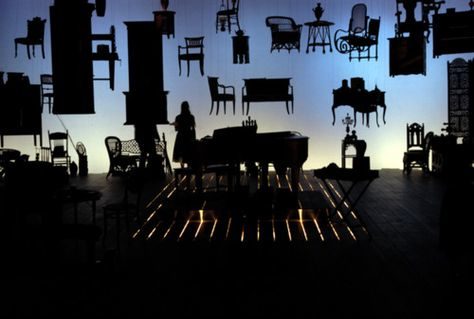Given that in Eduardo Orozco’s play, Asatia, the protagonist discovers that dedicating one’s life to designing and achieving meticulously calculated goals does not guarantee happiness, it is quite fitting that we accidentally chanced upon the theater where the play was being performed.
Strolling with my son after a delectable meal at Luciferina on Colonia Juárez in Mexico City, we found ourselves facing a small storefront with a sign “El Milagro.” I thought it must be the press that publishes so many of the film scripts and plays already on my book shelves in Buffalo, NY. Without hesitating I suggested we go in, and we found not only a book store and a bar but also a small black box theatre in the back. A play was about to begin and there were still a handful of tickets available. We were welcomed into a theatrical space with 21 seats.
The two actors, Verónica Bravo and Eduardo Orozco, playing the roles of Paula and Matías, were standing facing the audience as we walked in. She was carrying her cello and he stood with his feet apart and hands behind his back holding a laptop. Behind them stood a light couch, a desk, and a chair. The walls were basically bare, except for an empty picture frame.
Once the play started, it became clear that she was at a street corner waiting for a ride and he had just come out of the concert where she had performed. Their short conversation reveals that he is an aspiring pianist and that she, at the young age of 25 is already an accomplished cellist who plays for the Mexican National Symphony Orchestra. Despite holding a position coveted by many, Paula’s dream is to eventually play for the Berlin Symphony Orchestra.
While Bravo plays the role of Paula throughout the entire performance, Orozco is primarily Matías, but he also morphs into the playwright/narrator within the play, her father, her mother, her roommate, the pianist, the artist, etc.
Fluctuating between dialogues and narrative accounts, Asatia is a profound rumination of the desperate human need for recognition. Ultimately, Paula’s inability to fill that need sends her to her presumed death. In her last soliloquy, she defines the emptiness of her life as an illness due to the insatiable need to be seen, heard, and valued. She describes the need to find herself in the eyes of others, which points to a lack of self-acceptance. She claims that she exists only when there is an audience clapping and listening to her music. Although she claims to have experienced the ecstasy of oneness with her environment while playing or rehearsing, the occasions are few and far between. Once she realizes that she is not the best cellist, that all she sees in the mirror is her curriculum vitae, and that her life is equivalent to an unsatisfied hunger, life is no longer worth living.
The depression that Paula poignantly exhibits at the end is actually manifested throughout the play, but because initially, her career moves linearly toward its peak, we naively hope she will find fulfillment. This inkling of hope is underscored when she pauses from her long hours of rehearsals to fall in love. Nonetheless, she chooses to go play for the Berlin Symphony Orchestra instead of staying in Mexico with the one she loves. Indications that her void is insurmountable are the bare scenery, the cello she carries on her back throughout the play, and the definition of the term “asatia.”
Early on in the play, the characters explain that “asatia” is a combination of the words sadness and dissatisfaction. It means to be fully satisfied, yet to feel nothing but emptiness. It refers to the inability to live in and enjoy the present. It is the feeling produced by having achieved all of one’s goals and finally realizing that they do not fill the void.
Eduardo Orozco and Verónica Bravo are part of an ensemble called Colectivo Berenjena. Orozco’s script was the winner of a contest sponsored by Vaca 35 Teatro en Grupo, which included space at the Teatro Milagro to be performed. In her review, Eugenia Galeano Inclán indicates that according to the group, the play reflects the shock of not getting the acting jobs he and his colleagues expected upon graduation. After investing endless hours rehearsing, studying, memorizing lines, and sacrificing friendships and relationships it is difficult to face the disappointment of being unemployed. The play, however, emphasizes Paula’s story, and therefore is more about the inability to feel satisfied with one’s accomplishments, rather than about not realizing one’s goals.
The play first opened at El Milagro Theatre in November 2016. It has been staged in various venues and is currently (August 2017) being performed at Teatro la Capilla in Coyoacán, at the southern end of Mexico City.
Author: Eduardo Orozco
Directed by: Colectivo Berenjena
Cast: Verónica Bravo and Eduardo Orozco
Scenery and Costumes: Natalia Sedano and Salmah Beydoun
This post was written by the author in their personal capacity.The opinions expressed in this article are the author’s own and do not reflect the view of The Theatre Times, their staff or collaborators.
This post was written by Margarita Vargas.
The views expressed here belong to the author and do not necessarily reflect our views and opinions.



















